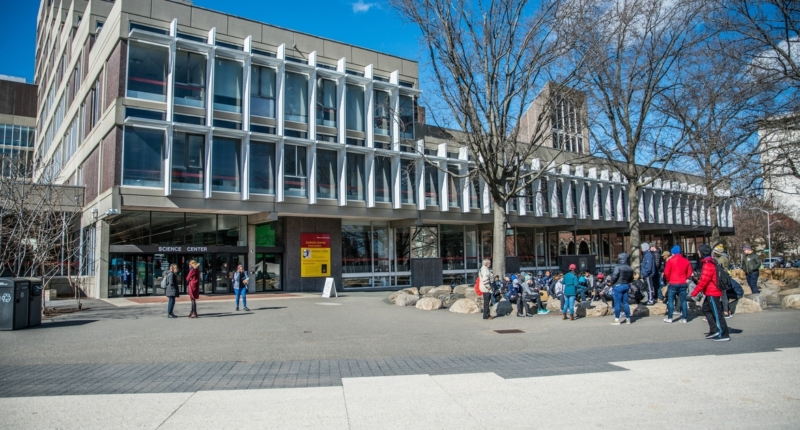Renowned computer science professor Cynthia Dwork recently delivered the annual Ding Shum lecture at the Center for Mathematics Sciences and Applications. During her talk, Dwork discussed the limitations of risk prediction algorithms and highlighted the fundamental issue of interpreting numerical probability predictions for one-time events. Dwork asked the audience to consider two worlds to illustrate the complexity of the issue and shared her research on using pseudorandom numbers to help detect the difference between these two situations. In addition, she presented a roadmap for her future research on developing an understanding of what transformations that satisfy the technical property can accomplish. Dwork, who is also a faculty affiliate at Harvard Law School and a distinguished scientist at Microsoft Research, has made significant contributions to the areas of differential privacy and algorithmic fairness.
Computer Science Professor Cynthia Dwork Delivers Annual Ding Shum Lecture
Cynthia Dwork, a computer science professor at Harvard’s School of Engineering and Applied Sciences, recently delivered the annual Ding Shum lecture at the Center for Mathematics Sciences and Applications. In her talk, titled “Measuring Our Chances: Risk Prediction in This World and its Betters,” Dwork discussed the limitations of risk prediction algorithms.
Dwork highlighted a fundamental issue with how algorithms are applied, stating that risk prediction is the defining problem of AI. She explained that while predictions may assign a numerical probability towards an event happening, interpreting these predictions for one-time events that either happen or do not happen is challenging.
According to Dwork, it can be difficult to determine whether a prediction function is accurate based on observing binary outcomes. For instance, if a prediction is made with a 75% probability, both ‘yes’ and ‘no’ are possible outcomes. Therefore, it is hard to assess whether the prediction was right or wrong.
To illustrate the complexity of the issue, Dwork asked the audience to consider two worlds. In one, there is no uncertainty in what’s going to happen in the future, but current predictors may lack enough information to make an accurate guess. In the other, there’s real inherent uncertainty, meaning that outcomes may change even if prediction processes are perfect. Dwork explained that the problem is that these two worlds are indistinguishable.
In her research, Dwork has been able to draw from the field of pseudorandom numbers to help detect the difference between these two situations. Her talk was well-received by the nearly 100 attendees and was moderated by CMSA postdoctoral fellow Faidra Monachou. The Ding Shum lecture is funded by Ding Lei and Harry Shum and covers an active area of research in applied mathematics. It is worth noting that the series was canceled for three years due to the Covid-19 pandemic.
Cynthia Dwork discusses her research on distinguishing real life outcomes from pseudorandom ones
Cynthia Dwork, a renowned computer science professor at Harvard’s School of Engineering and Applied Sciences, discussed her research on distinguishing real life outcomes from pseudorandom ones. According to Dwork, the goal is to determine whether an outcome is drawn from real life, rather than trying to determine whether a sequence is random or pseudorandom.
Dwork, who is also a faculty affiliate at Harvard Law School and a distinguished scientist at Microsoft Research, has made significant contributions to the areas of differential privacy and algorithmic fairness. Her work earned her the Institute of Electrical and Electronics Engineers’ Hamming Medal in 2020.
During her talk, Dwork presented a roadmap for her future research. The next step, she explained, is to develop an understanding of what transformations that satisfy this technical property can accomplish.
Don’t miss interesting posts on Famousbio

